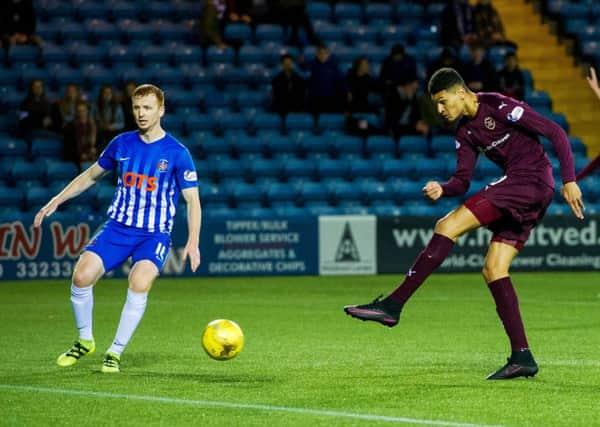Why goal-shy strikers are becoming an issue for Hearts


As bad a record as this may be, Hearts fans have become oddly used to their front men failing to find the target in recent years. In what must be a re-balancing of the universe, ever since John Robertson finally left the club in 1998, they’ve struggled to find a consistent marksmen in attack. No player has hit 20 in a single season since Robertson - Hibs, by comparison, have had three - while on six separate occasions no forward managed to reach double-figures.
Of course, football has changed in recent years. No longer is the striker there just to score goals.Now they’re at the centre of the attack rather than just the finish. They’ve to facilitate, link with others, upset centre halves, open up space, close down opponents, and so much more. With the extra workload, goals become harder to come by. It’s rare to find a striker who does all that and still scores regularly.
Advertisement
Hide AdAdvertisement
Hide AdIt means you can have a productive team even if the striker rarely finds the back of the net. In three of the last eight seasons, no Hearts striker has scored more than three goals. (You could also include the 2013-14 campaign, but they didn’t have one on the books for the first half of the term, and even after then Paul McCallum barely qualified.) In every one of those seasons, Hearts finished in the top six. In one instance they finished third; in another they won the Scottish Cup.
This season was following a similar pattern, but the loss of Sam Nicholson to injury (the winger, with four goals, had scored more than the forwards put together) gives Robbie Neilson a problem to solve. Prior to this, the head coach would switch between a 4-4-2 and a 4-2-3-1, which depended on the personnel (if Walker and Nicholson both played) and how deep he would allow Watt to drop and link with the rest of the midfield. Now, with limited options to choose from out-wide - and of what’s left, Walker barely even qualifies - he’s been forced to select a 4-4-2 with a centre midfielder, typically Arnaud Djoum, out on the right. It now falls on the strikers to carry the burden.
Though typically more lethal than he’s shown this term, Watt has never been a consistent scorer throughout his career. You can see why when you watch him. He likes to drop deep and does his best work by running with the ball, creating havoc and drawing defenders towards him. Sammon, aside from a mad six months at Kilmarnock where he couldn’t stop banging them in, has always struggled for goals. Muirhead is still a young player, but similar to Watt he likes to drift away from the penalty area.
Furthermore, a flat midfield in a 4-4-2 doesn’t complement at least two of the Hearts midfield. Captain Perry Kitchen, though still good enough to play the role, is more suited to playing defensive midfield rather than being a No.8. While Jamie Walker looks increasingly more comfortable in the centre rather than out wide. So much so that he often drifts into a central position rather than keep the shape.
It all led to a poor performance in the loss to Kilmarnock, a team previously winless in front of their own fans. Neilson tried to address the situation midway through the first half, going 4-2-3-1 with Sammon out wide, Watt as the No.9 and Djoum in behind. Safe to say, it didn’t work. In fact, Hearts probably got worse. They only really threatened the Kilmarnock goal when Johnsen came on after 62 minutes, not long before the second goal.
Nobody knows exactly what to make of the Norwegian/American to this point. He has some terrific attributes. He’s 6ft 5in, strong, technical and fast. Occasionally he’s shown intelligent movement and taken some silky smooth touches. Then there are times where he seems unfamiliar with the rules of offside and the ball bounces off him whenever he attempts to control.
Fans who only saw the quick two-minute highlights, which included Johnsen’s baffling miss, would have been confused this morning to see Neilson touting the striker for a start against Inverness CT. However, having watched the full game back, there’s no doubt he improved the Hearts attack after he came on. His presence allowed the ball to stick when the visitors went direct, and he executed an excellent run, touch and cross not long after his introduction, which should have led to a goal had any Hearts player in the centre gambled on a ball coming in.
He’s needed time to acclimatise to Scottish football. His scuffed shot on the turn from four yards which trickled into the arms of Jamie MacDonald would suggest he’s not fully up to speed yet. But Hearts need someone to step up and be a regular source of goals if this season is to reach it’s fullest potential. With Rangers struggling and Aberdeen within reach, the Hearts support want a second place finish. Maybe it’s time to unleash the enigmatic frontman. As the statistics tell us, it wouldn’t hurt to try.